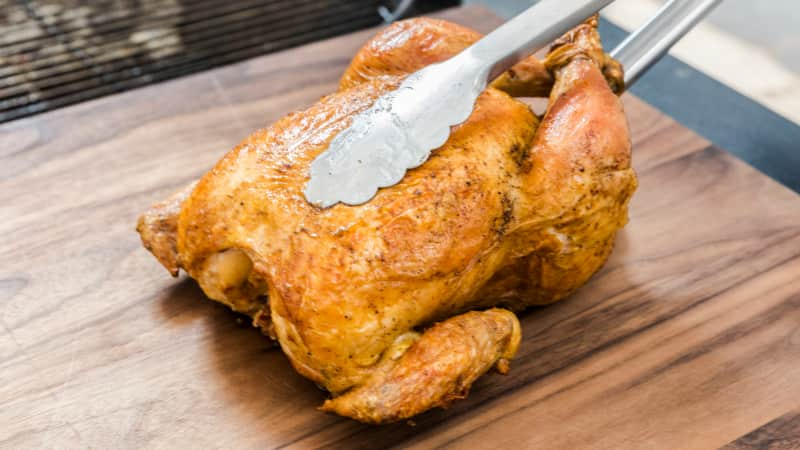My Goals and Discoveries
Tender, juicy meat
Grilling the chicken over indirect heat for the majority of the cooking time allows it to cook gently and evenly throughout.
Distinct grill flavor
Grilling the bird over direct heat for the last few minutes of cooking helps it pick up distinct grill flavor, and adding a wood chip packet to the fire subtly infuses the meat with smoke.
Deeply bronzed—not burnt—skin
Draining the bird’s cavity midway through cooking rids it of the fatty juices that would otherwise drip onto the fire and cause significant flare-ups that scorch.
Quick, simple method
With no salt treatments or knife work, the chicken requires minimal prep.



